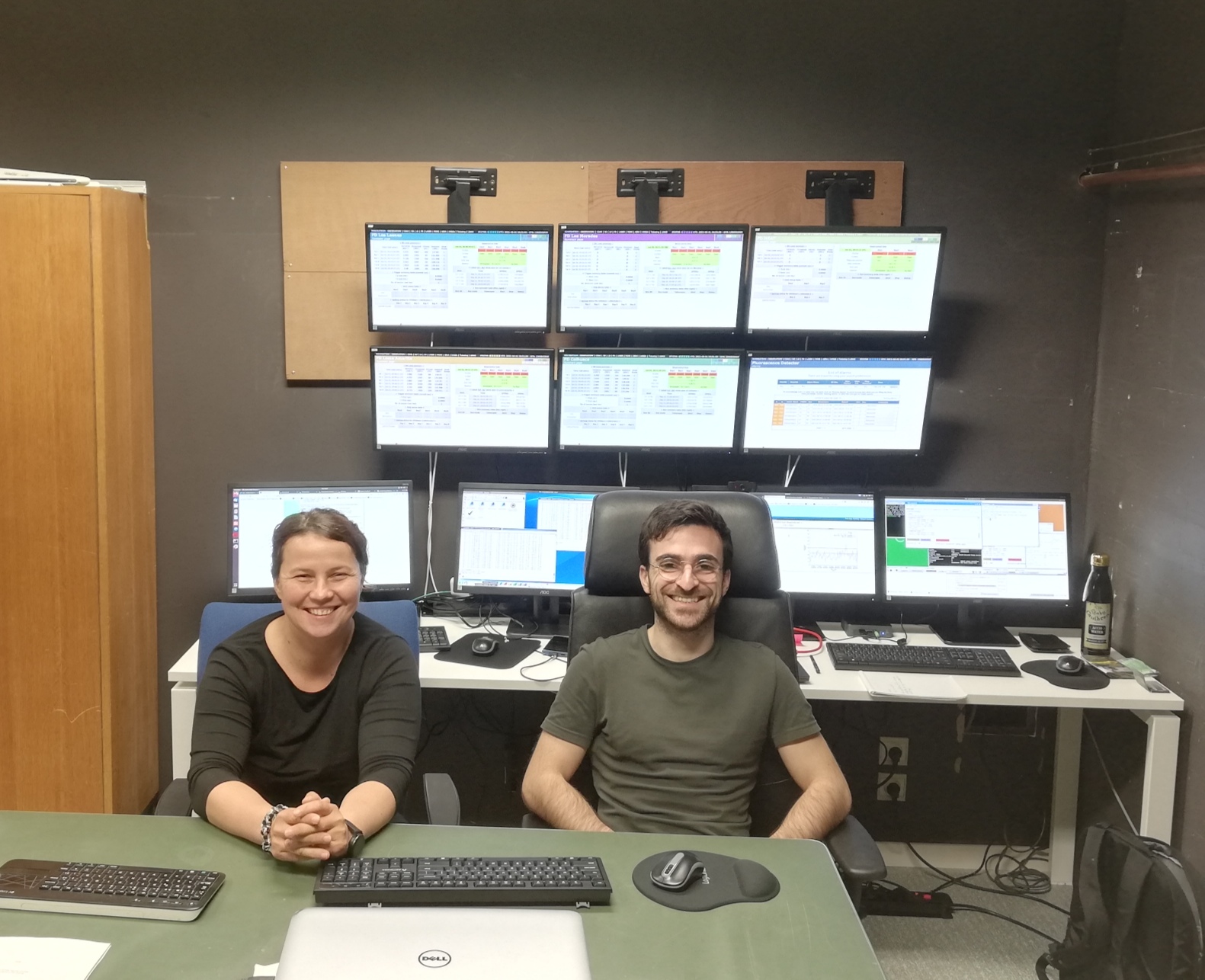
The Pierre Auger Observatory, located in Pampa Amarilla, near the city of Malargue (Argentina), was built to measure the properties of particles with the highest energies in our Universe.
These so-called high-energy cosmic rays (UHECR) can exceed energies larger than 10^{20} eV, a factor 100 higher than the energies reached in current man-made accelerators. Upon entering the atmosphere, the UHECRs interact with the matter and produce a cascade of secondary particles. An array of 1660 surface detectors spread over 300km^2 measure/detect the particles that reach the ground.
At night, the atmosphere above the array is monitored by 24 telescopes which measure the fluorescence light produced during the cascade development.
The telescopes are very sensitive to environmental factors and cannot be operated in bad weather conditions (wind larger than 50km/hour, rain, snow) nor when the night sky background light is too high (in full or half Moon phases). The telescopes require the presence of researchers for their operation (shutters/curtains opening, data acquisition, atmosphere monitoring via laser shots, fast reaction during alarms). Due to the travel restrictions imposed by the COVID pandemic, on-site monitoring is currently not possible. Remote shift rooms have been installed all over the world (Australia, Czech Republic, Germany, Italy, Poland, Portugal, Romania, Slovenia, Spain, USA) to operate the telescopes from a distance. Funded by FRS-FNRS the researchers at the IIHE-ULB have installed a shift room in Brussels to operate the telescopes in Argentina remotely. A first successful shift took place on the night of the 31st May and for the next 2 months, the IIHE researchers will be busy to take care of the telescopes and ensure the continuity in data taking of the Pierre Auger Observatory during the COVID pandemic.
